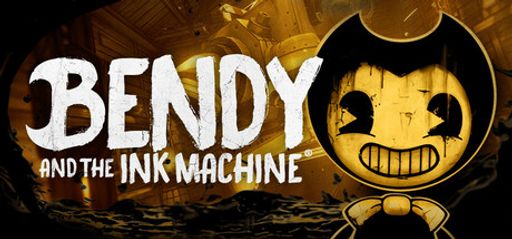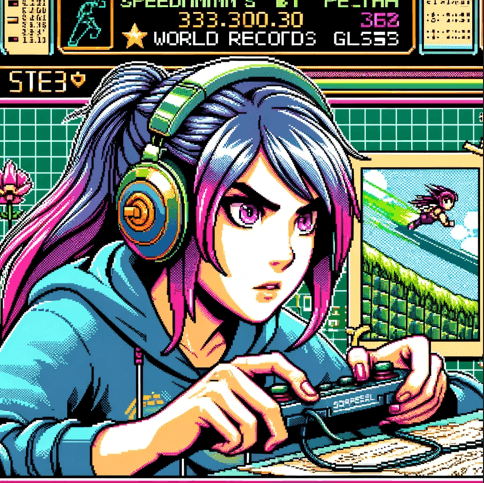 Bendy and the Ink Machine, by Joey Drew Studios, challenged my best speedruns in under two hours. I loved how the bacon soup gag surfaced in the user review—“10/10 would drink all the bacon soups again.” Its Unity engine keeps frame rates stable on PC and consoles, supporting smooth gameplay. I found secret shortcuts in Chapter Three, slicing my completion time and shaving off precious seconds. The old-timey Disney art style keeps your heart racing as you dash past ink monsters, blending nostalgia with dread. I also trade studio trivia: Joey Drew Studios, formed in 2014, set out to blend cartoon nostalgia with horror innovation, a move that now feels genre-defining.
Bendy and the Ink Machine, by Joey Drew Studios, challenged my best speedruns in under two hours. I loved how the bacon soup gag surfaced in the user review—“10/10 would drink all the bacon soups again.” Its Unity engine keeps frame rates stable on PC and consoles, supporting smooth gameplay. I found secret shortcuts in Chapter Three, slicing my completion time and shaving off precious seconds. The old-timey Disney art style keeps your heart racing as you dash past ink monsters, blending nostalgia with dread. I also trade studio trivia: Joey Drew Studios, formed in 2014, set out to blend cartoon nostalgia with horror innovation, a move that now feels genre-defining.
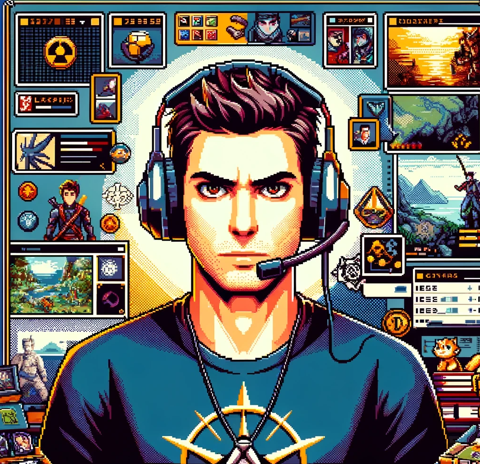 I map every corner of Joey Drew’s abandoned workshop, noting each eerie poster and flickering bulb. The positive feedback on visuals and story pairs well with my playstyle, especially since I favor immersive exploration. The collectible ink vials and hidden cartoon cells reward meticulous players. One user noted, “graphics still feel as if it was made this year”—that’s Unity’s lighting and clever asset reuse at work. I tracked minor bugs on Steam forums, then filed detailed reports to prompt developer patches. My 100% checklist spanned side puzzles, enemy patterns, and hidden audio logs. I admire how the game ties small clues to the larger mystery, making every scrap of lore count toward the overall narrative immersion.
I map every corner of Joey Drew’s abandoned workshop, noting each eerie poster and flickering bulb. The positive feedback on visuals and story pairs well with my playstyle, especially since I favor immersive exploration. The collectible ink vials and hidden cartoon cells reward meticulous players. One user noted, “graphics still feel as if it was made this year”—that’s Unity’s lighting and clever asset reuse at work. I tracked minor bugs on Steam forums, then filed detailed reports to prompt developer patches. My 100% checklist spanned side puzzles, enemy patterns, and hidden audio logs. I admire how the game ties small clues to the larger mystery, making every scrap of lore count toward the overall narrative immersion.
 I dive into open areas hunting secrets with flashlight in hand. Bendy’s workshop hides ghostly animations around every scribbled door, often paired with uncanny sound cues. Joey Drew Studios once said in an interview they drew inspiration from Fleischer Studios cartoons for their design—think rubber-hose animation with a sinister twist. The environmental storytelling rivals classics like Little Nightmares, blending narrative depth with visual mood. I took epic battles against ink monsters, using the wrench creatively to stun them and manage crowd control. Exploring dark corridors gave me that adrenaline rush I crave. I loved how the game merges puzzle action and horror, effectively setting a fresh trend for narrative-driven exploration games.
I dive into open areas hunting secrets with flashlight in hand. Bendy’s workshop hides ghostly animations around every scribbled door, often paired with uncanny sound cues. Joey Drew Studios once said in an interview they drew inspiration from Fleischer Studios cartoons for their design—think rubber-hose animation with a sinister twist. The environmental storytelling rivals classics like Little Nightmares, blending narrative depth with visual mood. I took epic battles against ink monsters, using the wrench creatively to stun them and manage crowd control. Exploring dark corridors gave me that adrenaline rush I crave. I loved how the game merges puzzle action and horror, effectively setting a fresh trend for narrative-driven exploration games.
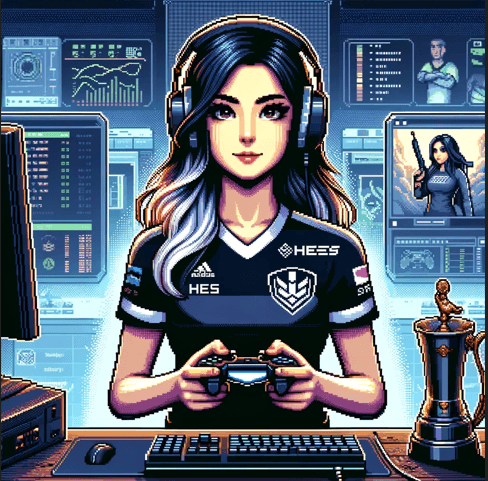 Bendy’s mechanics balance puzzle timing and resource management without overwhelming the player. You juggle health ink and item drops under pressure, keeping each encounter tense. Compared to Outlast, this game leans more on brain teasers than stealth. The developers aimed for a smooth puzzle curve, though some chapters spike in difficulty unexpectedly. I recommend using audio cues—ink drips signal nearby enemies and help plan your route. In competitive terms, refining these skills mirrors learning combo timing in fighting games. I appreciate how character development ties into gameplay: Henry’s flashlight upgrades reflect his growing resolve and evolving courage within the ink-slicked chaos.
Bendy’s mechanics balance puzzle timing and resource management without overwhelming the player. You juggle health ink and item drops under pressure, keeping each encounter tense. Compared to Outlast, this game leans more on brain teasers than stealth. The developers aimed for a smooth puzzle curve, though some chapters spike in difficulty unexpectedly. I recommend using audio cues—ink drips signal nearby enemies and help plan your route. In competitive terms, refining these skills mirrors learning combo timing in fighting games. I appreciate how character development ties into gameplay: Henry’s flashlight upgrades reflect his growing resolve and evolving courage within the ink-slicked chaos.

 Let’s talk story. Joey Drew Studios crafted twists around Henry’s past and Bendy’s eerie origins. We see hints in Alice Angel’s distorted recordings and cryptic wall scrawls. The pacing stays tight, with each chapter ending on a cliffhanger that beckons you to continue. Dialogue feels hand-drawn, concise, and creepy, matching the game’s art style. I noticed the narrative hook in Chapter Two—the ink machine’s hiss shows up in your earbuds just before a scare, subtly foreshadowing tension.
Let’s talk story. Joey Drew Studios crafted twists around Henry’s past and Bendy’s eerie origins. We see hints in Alice Angel’s distorted recordings and cryptic wall scrawls. The pacing stays tight, with each chapter ending on a cliffhanger that beckons you to continue. Dialogue feels hand-drawn, concise, and creepy, matching the game’s art style. I noticed the narrative hook in Chapter Two—the ink machine’s hiss shows up in your earbuds just before a scare, subtly foreshadowing tension.
 The lore drops through collectible documents, hidden notes, and scattered voice logs. You piece together Joey Drew’s dark history as the plot thickens with each find. That depth keeps me replaying, looking for clues I may have missed. The story beats—like cartoon blood on the floor—feel meaningful when you find every scrap of evidence and re-contextualize earlier scenes.
The lore drops through collectible documents, hidden notes, and scattered voice logs. You piece together Joey Drew’s dark history as the plot thickens with each find. That depth keeps me replaying, looking for clues I may have missed. The story beats—like cartoon blood on the floor—feel meaningful when you find every scrap of evidence and re-contextualize earlier scenes.
 I compare it to Amnesia: The Dark Descent. Both games use atmosphere and limited tools to build tension, allowing the setting to do much of the storytelling. Bendy leans more on puzzles in a closed studio, but both games nail immersive world-building through subtle detail, audio layering, and restrained combat.
I compare it to Amnesia: The Dark Descent. Both games use atmosphere and limited tools to build tension, allowing the setting to do much of the storytelling. Bendy leans more on puzzles in a closed studio, but both games nail immersive world-building through subtle detail, audio layering, and restrained combat.
 Narrative and gameplay sync when you face puzzles that echo the story’s emotional beats. Solving a train route puzzle after reading a lost résumé feels thematic and earned. That writer’s heart shows in every obstacle, connecting players emotionally to the game’s crafted world.
Narrative and gameplay sync when you face puzzles that echo the story’s emotional beats. Solving a train route puzzle after reading a lost résumé feels thematic and earned. That writer’s heart shows in every obstacle, connecting players emotionally to the game’s crafted world.
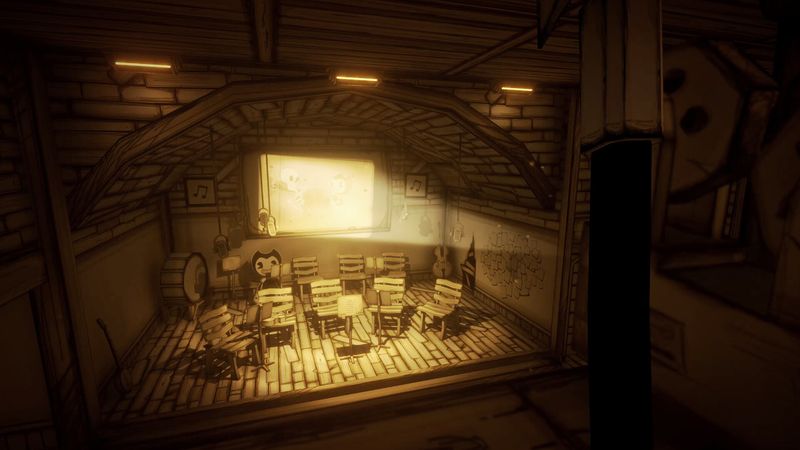
 On visuals, the black-and-white palette pops with occasional sepia ink splashes, creating a signature look. Unity’s shader work gives it a hand-drawn, vintage feel that never feels cheap. I saw it hit 60 fps on my GTX 1060 rig during most playthroughs. On console, it holds near 30 fps, with minor frame dips in mob-heavy scenes.
On visuals, the black-and-white palette pops with occasional sepia ink splashes, creating a signature look. Unity’s shader work gives it a hand-drawn, vintage feel that never feels cheap. I saw it hit 60 fps on my GTX 1060 rig during most playthroughs. On console, it holds near 30 fps, with minor frame dips in mob-heavy scenes.
 I agree—the vintage cartoon art direction sets this horror experience apart. Shadows stretch like in classic rotoscope animations, and environments feel alive. One user said you “forget what reality is.” I second that—the immersion is that strong, especially during lore-heavy chapters.
I agree—the vintage cartoon art direction sets this horror experience apart. Shadows stretch like in classic rotoscope animations, and environments feel alive. One user said you “forget what reality is.” I second that—the immersion is that strong, especially during lore-heavy chapters.
 The engine allows interactive light sources that support stealth and surprise. You can hide behind crates, flick switches, and shape the mood with your flashlight’s beam, adding another layer to puzzle and combat strategy.
The engine allows interactive light sources that support stealth and surprise. You can hide behind crates, flick switches, and shape the mood with your flashlight’s beam, adding another layer to puzzle and combat strategy.
 The art style also supports gameplay clarity. Enemies glow faintly in dark corners, guiding your reflex grabs or attacks without needing on-screen prompts. This keeps UI clean and fear high.
The art style also supports gameplay clarity. Enemies glow faintly in dark corners, guiding your reflex grabs or attacks without needing on-screen prompts. This keeps UI clean and fear high.
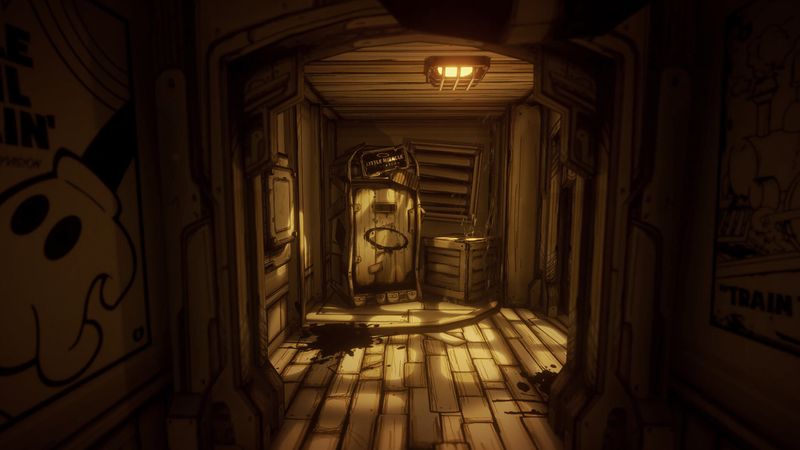
 The audio score blends eerie piano chords with creaky gears, establishing a haunting rhythm. I replay tracks like “Ink Flow,” which ramps up tension beautifully. Door creaks cue incoming foes, helping you prep for combat or hide. The sound design fuels my run strategy, especially during speedruns.
The audio score blends eerie piano chords with creaky gears, establishing a haunting rhythm. I replay tracks like “Ink Flow,” which ramps up tension beautifully. Door creaks cue incoming foes, helping you prep for combat or hide. The sound design fuels my run strategy, especially during speedruns.
 Voice work remains minimal, but the ambient whispers from recordings enrich character arcs and world depth. Ridiculous laughter echoes as you collect documents, making ordinary tasks feel eerie. Those details matter in a game so focused on atmosphere.
Voice work remains minimal, but the ambient whispers from recordings enrich character arcs and world depth. Ridiculous laughter echoes as you collect documents, making ordinary tasks feel eerie. Those details matter in a game so focused on atmosphere.
 Sound also acts as a navigation tool. I followed ink puddle drips to secret rooms multiple times, using my ears more than my eyes. These small touches encourage a multisensory approach to exploration.
Sound also acts as a navigation tool. I followed ink puddle drips to secret rooms multiple times, using my ears more than my eyes. These small touches encourage a multisensory approach to exploration.
 I noted how audio spikes signal puzzle triggers. You learn to listen before you look—a design tactic that keeps you alert and fully immersed.
I noted how audio spikes signal puzzle triggers. You learn to listen before you look—a design tactic that keeps you alert and fully immersed.

 On characters, Henry feels like a relatable everyman dropped into madness. Bendy turns childhood cartoons into nightmares, warping innocence into dread. Alice Angel’s twisted persona adds moral ambiguity. Joey Drew’s voice recordings reveal a flawed artist obsessed with legacy and control.
On characters, Henry feels like a relatable everyman dropped into madness. Bendy turns childhood cartoons into nightmares, warping innocence into dread. Alice Angel’s twisted persona adds moral ambiguity. Joey Drew’s voice recordings reveal a flawed artist obsessed with legacy and control.
 I appreciate the diverse cast design: human and cartoon figures collide to reflect creativity and hubris gone wrong. They feel symbolic of broader themes, like ambition’s price.
I appreciate the diverse cast design: human and cartoon figures collide to reflect creativity and hubris gone wrong. They feel symbolic of broader themes, like ambition’s price.
 Their backstories show in environmental cues—abandoned desks, sketches, half-drawn cells left behind. This silent storytelling reinforces each character’s arc without direct exposition.
Their backstories show in environmental cues—abandoned desks, sketches, half-drawn cells left behind. This silent storytelling reinforces each character’s arc without direct exposition.
 Their arcs also influence puzzles. Every antagonist embodies a failed experiment of Joey Drew’s ambitions, turning gameplay into a symbolic reckoning.
Their arcs also influence puzzles. Every antagonist embodies a failed experiment of Joey Drew’s ambitions, turning gameplay into a symbolic reckoning.
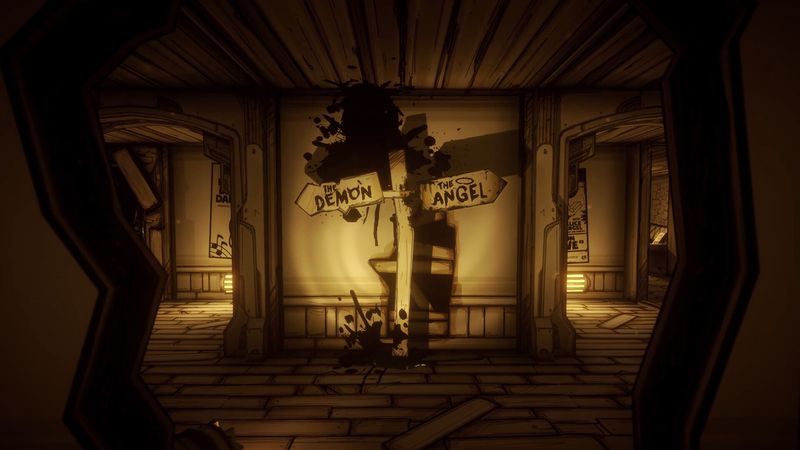
 The challenge blends combat hesitation with puzzle speed. I rated it an easy-learn-but-hard-to-master run. Some fans flagged that Chapter Four spikes in difficulty. Still, I felt the balance favored speedrunners who can adapt quickly.
The challenge blends combat hesitation with puzzle speed. I rated it an easy-learn-but-hard-to-master run. Some fans flagged that Chapter Four spikes in difficulty. Still, I felt the balance favored speedrunners who can adapt quickly.
 Puzzles in Bendy and the Ink Machine rarely overstay their welcome. The progression curve feels smooth, even for completionists like me who inspect every corner. Clue placement is thoughtful, rewarding those who linger.
Puzzles in Bendy and the Ink Machine rarely overstay their welcome. The progression curve feels smooth, even for completionists like me who inspect every corner. Clue placement is thoughtful, rewarding those who linger.
 Exploration holds few obstacles beyond ink monsters and locked doors. That suits my open-world cravings, giving me room to breathe and strategize between tense sequences.
Exploration holds few obstacles beyond ink monsters and locked doors. That suits my open-world cravings, giving me room to breathe and strategize between tense sequences.
 I would have liked an adjustable difficulty slider for puzzles to welcome more casual players. However, community mods exist that offer this flexibility and enhance replayability.
I would have liked an adjustable difficulty slider for puzzles to welcome more casual players. However, community mods exist that offer this flexibility and enhance replayability.
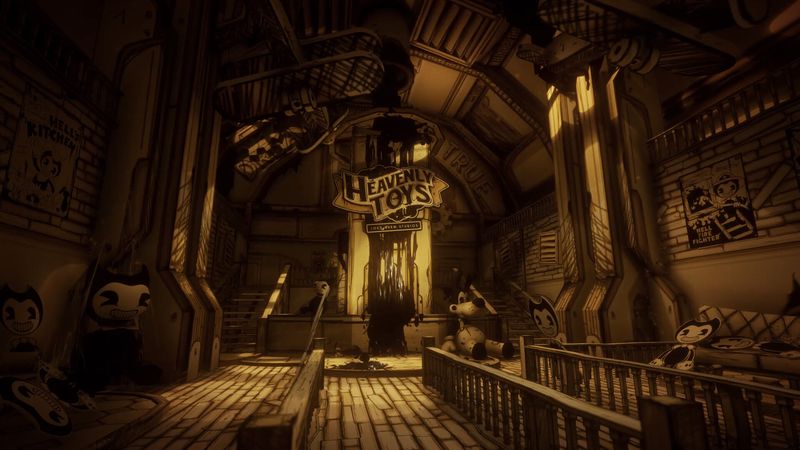
 Replay value comes from alternate endings, hidden cartoon reels, and branching exploration. Time and again, secret rooms in each chapter lure me back with just enough mystery to warrant another go.
Replay value comes from alternate endings, hidden cartoon reels, and branching exploration. Time and again, secret rooms in each chapter lure me back with just enough mystery to warrant another go.
 I earned all achievements in under 15 hours. Still, I revisit for lore I missed, curious lines of dialogue, and artistic details that reveal new meaning upon repeat viewings. There’s always something subtle waiting to be discovered.
I earned all achievements in under 15 hours. Still, I revisit for lore I missed, curious lines of dialogue, and artistic details that reveal new meaning upon repeat viewings. There’s always something subtle waiting to be discovered.
 I replay just to explore different routes and find new Easter eggs. No matter how many times I run through Bendy and the Ink Machine, every rerun reveals something new if you keep your eyes—and ears—open.
I replay just to explore different routes and find new Easter eggs. No matter how many times I run through Bendy and the Ink Machine, every rerun reveals something new if you keep your eyes—and ears—open.
 Final Thoughts: Bendy and the Ink Machine stands out with its fusion of classic cartoon art and modern horror puzzles. Joey Drew Studios pushed the genre forward with tight pacing and rich lore. Whether you’re a newcomer or a seasoned horror fan, the game appeals to casual explorers, completionists, speedrunners, and hardcore strategists alike. With each chapter layered in narrative depth and player choice, it remains a masterclass in atmospheric horror.
Final Thoughts: Bendy and the Ink Machine stands out with its fusion of classic cartoon art and modern horror puzzles. Joey Drew Studios pushed the genre forward with tight pacing and rich lore. Whether you’re a newcomer or a seasoned horror fan, the game appeals to casual explorers, completionists, speedrunners, and hardcore strategists alike. With each chapter layered in narrative depth and player choice, it remains a masterclass in atmospheric horror.
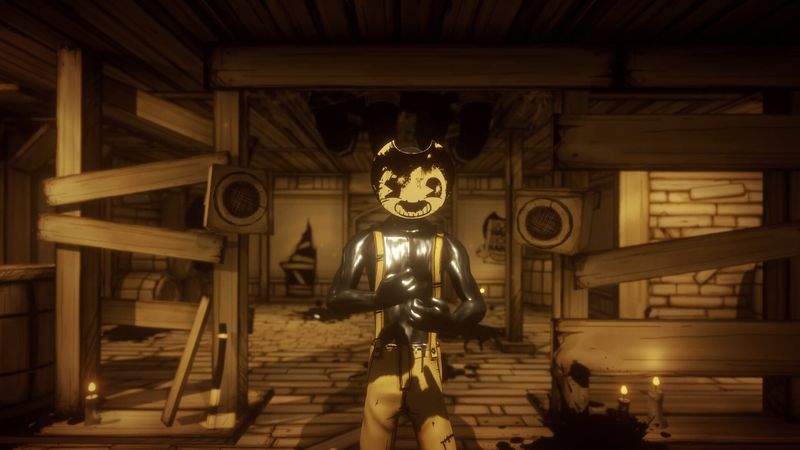
 If you loved this game, try Little Nightmares for puppet-like horror puzzles in dark vessels. Explore Amnesia: The Dark Descent if you crave immersive first-person terror. Cuphead offers hand-drawn art with fierce run-and-gun boss battles in 1930s style. Outlast delivers a raw, stealth-based survival horror experience in an abandoned asylum. Finally, check Among the Sleep for a unique child’s perspective in a twisted, tall-tales environment.
If you loved this game, try Little Nightmares for puppet-like horror puzzles in dark vessels. Explore Amnesia: The Dark Descent if you crave immersive first-person terror. Cuphead offers hand-drawn art with fierce run-and-gun boss battles in 1930s style. Outlast delivers a raw, stealth-based survival horror experience in an abandoned asylum. Finally, check Among the Sleep for a unique child’s perspective in a twisted, tall-tales environment.

